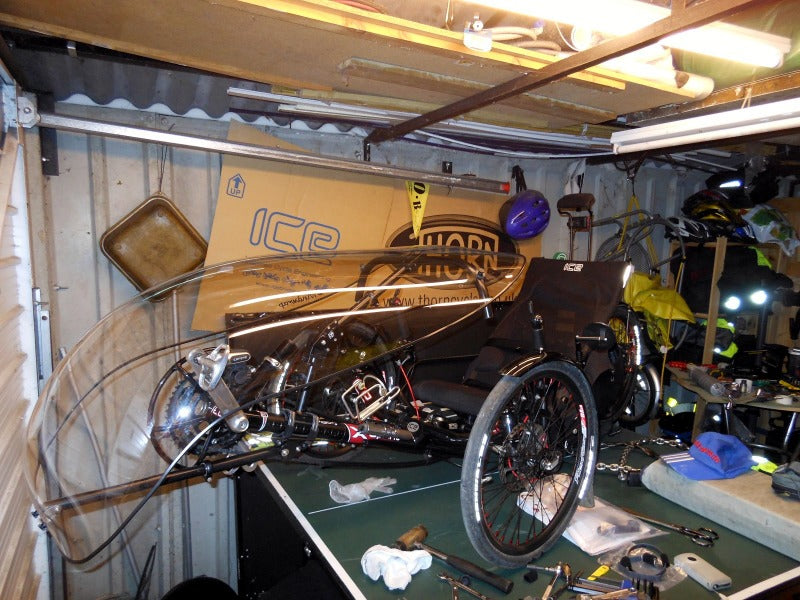
Can A Fairing Make Riding Less Of A Drag?
Casimir Covert-KeefeWhat Fairings Do You Sell?
Here at T-Cycle, we build and sell Windwrap Fairings, as well the as the mounting hardware and some accessories to go along with it all. There are four fairings:
-
The WINTR Fairing is our flagship fairing. A full-sized bubble that wraps around from under the pedals up and over your knees, the WINTR will keep you warmer when it's cold and dryer when it's wet. Ideal for most trikes and bikes with the cranks out front. The mounting hardware for the WINTR allows the fairing bubble to fold forward so that it's still easy to get on and off the trike.
-
The SPRING Fairing is the mini version of the WINTR, offering protection for your feet. Ideal for bikes and trikes with low seats and limited forward visibility. In spite of its small size, it's great at keeping your feet warm if you're a cold weather rider.
-
The WERX Fairing is specifically made for long wheelbase bikes where the pedals are down fairly low, like a Tour Easy or a Bell. The shape and contour of these fairings provide great aerodynamics and the fairing that turns with the handlebars so as to not interfere with steering.
-
The WRNS Fairing is made for long wheelbase bikes where the pedals aren't down as low, like the RANS Stratus. This fairing is designed to provide great aerodynamics and good foot clearance, with the main curve of the bubble shifted up compared to the WERX fairing.
Can I See Over It?
Before you order a fairing, you should check for vision restrictions, because, though they are often clear, fairings are meant to be primarily looked over and not always through.

As our shapely green man demonstrates, there are four main points that should be taken into account:
- The top of your foot stroke.
- The top of your knee stroke.
- The highest point of the handlebars, including your hands if you have above the seat steering.
- Your eye height while seated on the vehicle.
In order to properly see over a fairing, your eyes need to be:
- 1.5 inches (3.8cm) higher than your knees.
- 2 inches (5cm) higher than your toes.
- 3 inches (7.6cm) higher than your handlebars.
Following these rules will give you a line of sight to the road about 20 feet (6 meters) ahead of you. If you want to see the road closer without looking through the fairing, you need to add 1 to 2 inches (2 to 5cm) to the above differences. For most riding conditions, 20-30 feet (6-9m) is a reasonable sight line. Keep in mind that while fairings are transparent, glare, rain, fog, superheroes and other conditions can impair your ability to see through a fairing. For racing, where absolute speed is paramount, you could reconsider the above requirements, but for the day to day, it is important that you have a good sightline over your fairing.
Also keep in mind that fairings alter the aerodynamics of a bike considerably. If you have a greatly laid back seat for aerodynamics, the gains from adding a fairing will be less dramatic. So, as you take the measurements listed above, remember that you can raise your seat now that you have a sleek, wind-fighting fairing!
